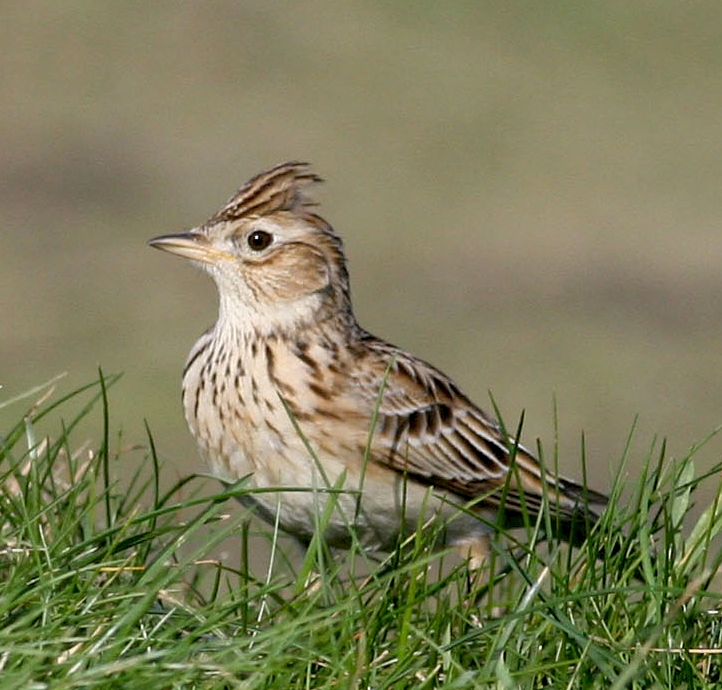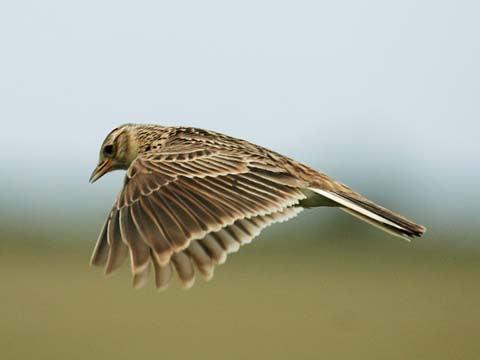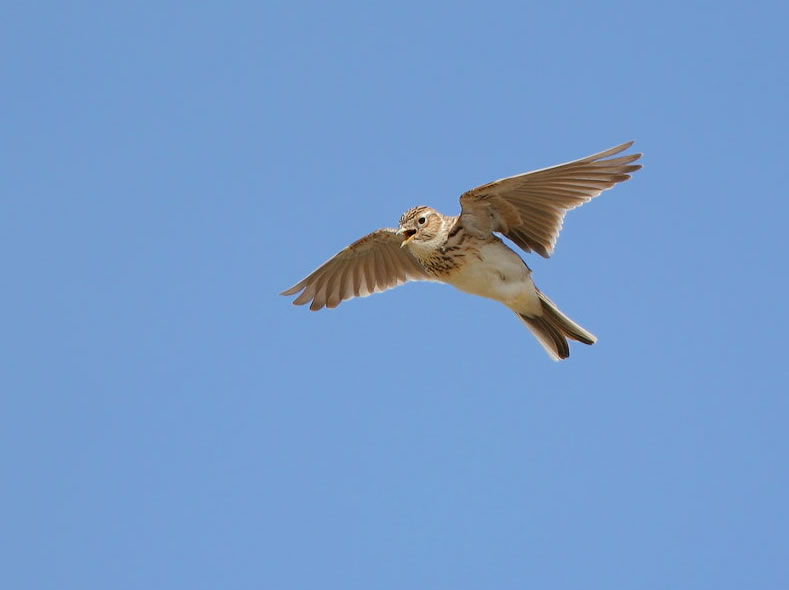
Alauda arvensis
TAXONOMY
Alauda arvensis Linnaeus, 1758, Europe.
OTHER COMMON NAMES
French: Alouette des champs; German: Feldlerche; Spanish:
Alondra Comъn.
PHYSICAL CHARACTERISTICS
7.1–7.5 in (18–19 cm); male 0.9–1.9 oz (27–55 g); female
0.6–1.7 oz (17–47 g). Extensively streaked brown plumage,
crown feathers can be raised to a short crest; bill stronger than
bill of wood lark; sexes alike. Most common lark species within
its western Palearctic part of
DISTRIBUTION
.
DISTRIBUTION
North Africa, Europe, and Asia; introduced in Australia,
Canada (Vancouver Island, British Columbia), Hawaii, and
New Zealand.
HABITAT
Dense grasslands, cultivated farmland, airfields and sports
grounds.
BEHAVIOR
Perches only rarely on wires and trees. High-level song-flight
in breeding season. Male rises with rapid wing-beats, after prolonged
hovering falls parachute style and drops to ground suddenly,
singing all the time loudly and forcefully. Populations of
the western Palearctic are migratory, hibernate in the Mediterranean
region; breeding birds of the British Isles are sedentary.
Eastern Asiatic populations migrate to southeastern China;
populations of central Asia hibernate in northern India,
Afghanistan, and Iran; and eastern Palearctic populations migrate
to Turkey, Syria, and Jordan.
FEEDING ECOLOGY AND DIET
Mainly arthropods during summer, but seeds in winter.
REPRODUCTIVE BIOLOGY
Monogamous. Breeds April–July; two, rarely three, broods.
Cup-shaped nest in depression on ground. Three to five, exceptionally
up to seven, eggs. Female incubates for 12–14 days,
chicks leave nest when eight to 10 days old. Both parents care
for young.
CONSERVATION STATUS
Decreasing populations in Europe, but not considered threatened.
SIGNIFICANCE TO HUMANS
Still hunted legally in France, Greece, and Italy.
Other popular Animals
Photo Gallery of - Sky lark




 Animalia Life
Animalia Life